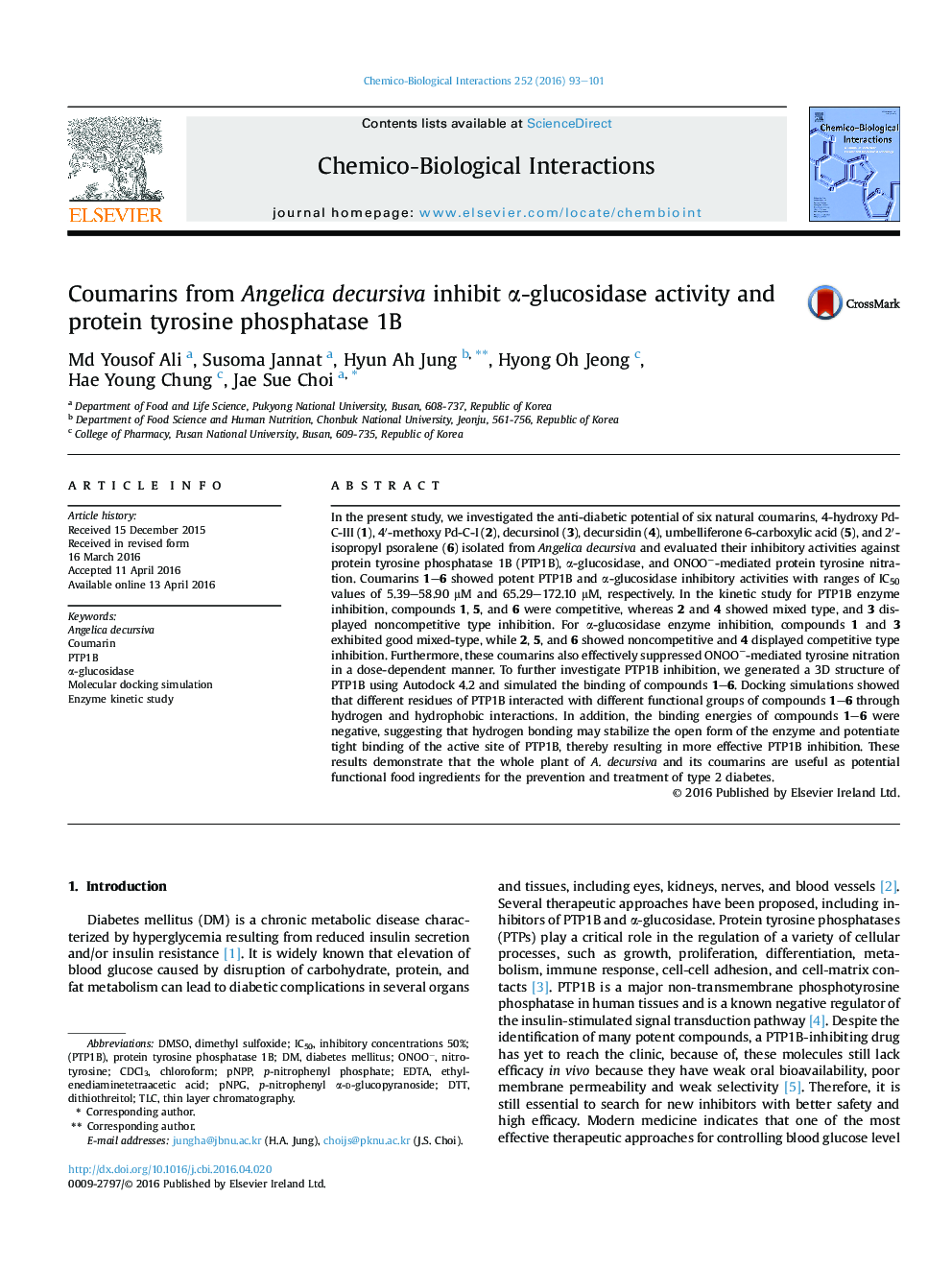| Article ID | Journal | Published Year | Pages | File Type |
|---|---|---|---|---|
| 2579864 | Chemico-Biological Interactions | 2016 | 9 Pages |
•Biological screening resulted in the isolation and identification of the coumarins.•Enzyme kinetic and docking simulation studies of coumarin compounds.•Six coumarins as PTP1B and α-glucosidase inhibitors may be used in the treatment of DM.•Six coumarins can inhibits ONOO−-mediated tyrosine nitration.•Coumarins may be promising anti-diabetic candidates.
In the present study, we investigated the anti-diabetic potential of six natural coumarins, 4-hydroxy Pd-C-III (1), 4′-methoxy Pd-C-I (2), decursinol (3), decursidin (4), umbelliferone 6-carboxylic acid (5), and 2′-isopropyl psoralene (6) isolated from Angelica decursiva and evaluated their inhibitory activities against protein tyrosine phosphatase 1B (PTP1B), α-glucosidase, and ONOO−-mediated protein tyrosine nitration. Coumarins 1–6 showed potent PTP1B and α-glucosidase inhibitory activities with ranges of IC50 values of 5.39–58.90 μM and 65.29–172.10 μM, respectively. In the kinetic study for PTP1B enzyme inhibition, compounds 1, 5, and 6 were competitive, whereas 2 and 4 showed mixed type, and 3 displayed noncompetitive type inhibition. For α-glucosidase enzyme inhibition, compounds 1 and 3 exhibited good mixed-type, while 2, 5, and 6 showed noncompetitive and 4 displayed competitive type inhibition. Furthermore, these coumarins also effectively suppressed ONOO−-mediated tyrosine nitration in a dose-dependent manner. To further investigate PTP1B inhibition, we generated a 3D structure of PTP1B using Autodock 4.2 and simulated the binding of compounds 1–6. Docking simulations showed that different residues of PTP1B interacted with different functional groups of compounds 1–6 through hydrogen and hydrophobic interactions. In addition, the binding energies of compounds 1–6 were negative, suggesting that hydrogen bonding may stabilize the open form of the enzyme and potentiate tight binding of the active site of PTP1B, thereby resulting in more effective PTP1B inhibition. These results demonstrate that the whole plant of A. decursiva and its coumarins are useful as potential functional food ingredients for the prevention and treatment of type 2 diabetes.
